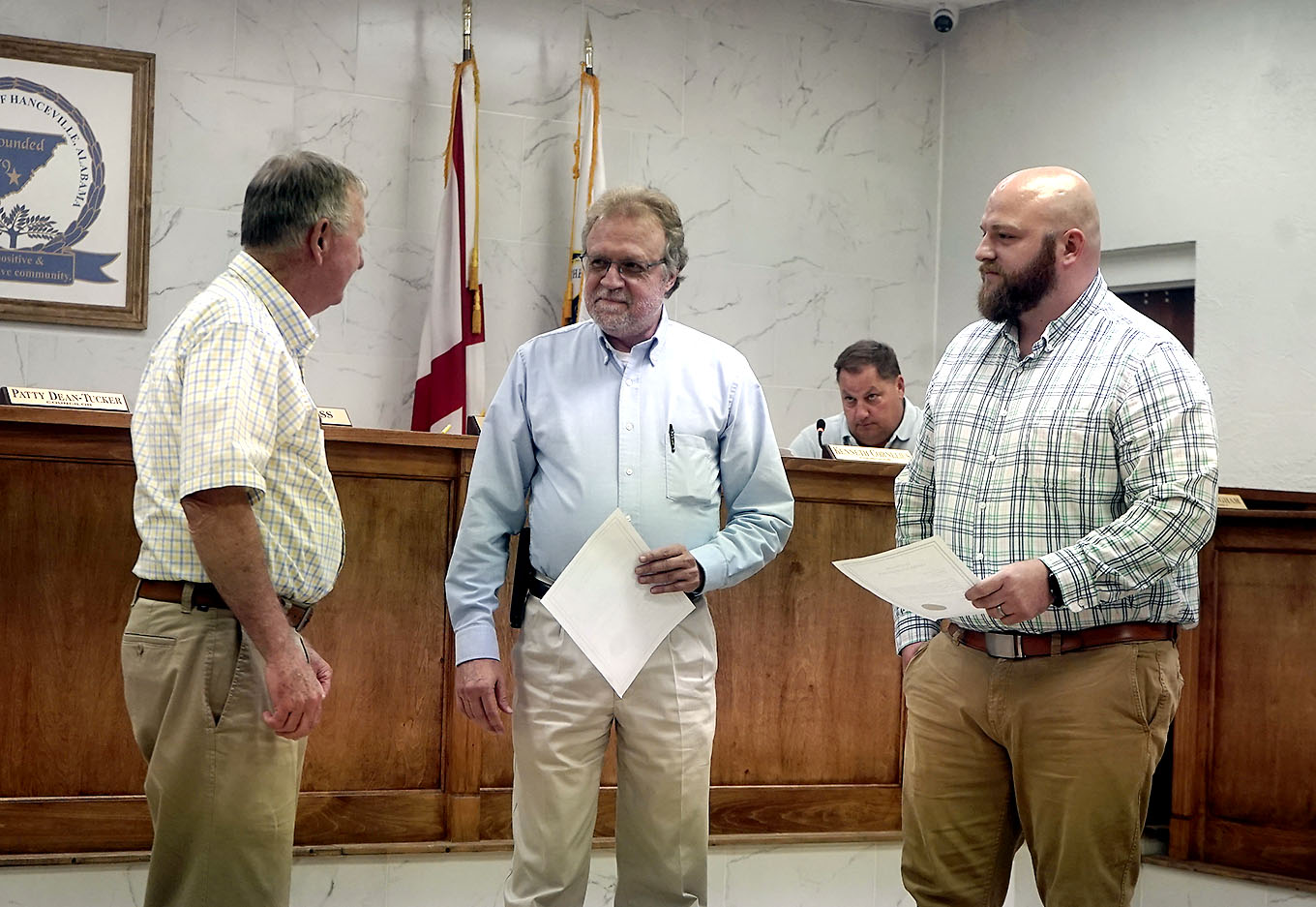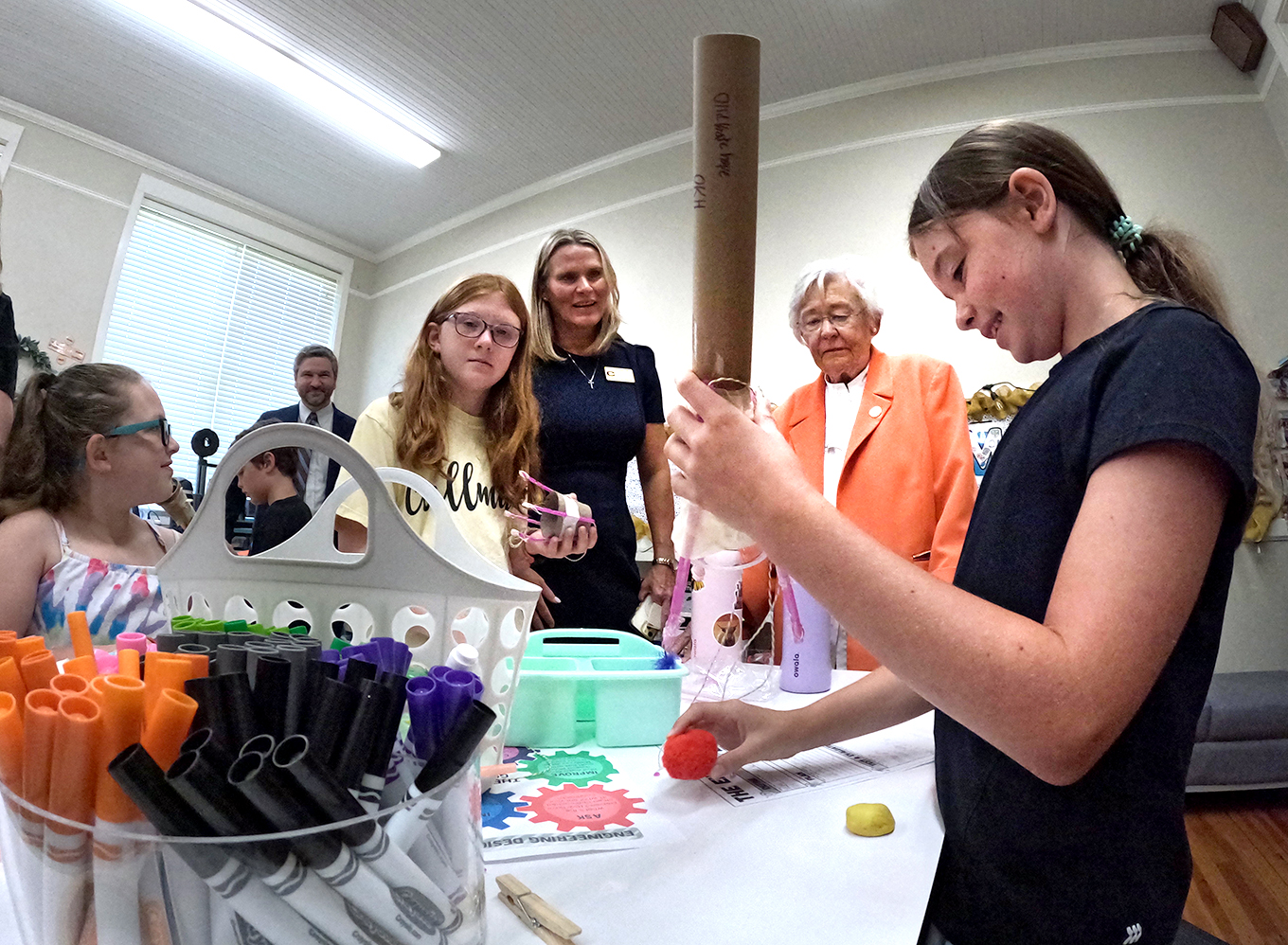Downtown Design Review Board holds first hearing, denies appeal from restaurant owner
Published 10:44 am Friday, September 20, 2024

- The Downtown Design Review Board (right) hears arguments from The National restaurant owner Michael Locasio (left side with plaid shirt) and the city of Cullman regarding the installation of a large, orange tent behind his establishment.
The city of Cullman’s newly recreated Downtown Design Review Board heard its first appeal Wednesday, Sept. 18, and upheld the decision from the city’s building department to deny The National restaurant owner Michael Locasio’s request to install what he described as a “high endurance” tent on the restaurant’s back patio.
The city dissolved its previous Downtown Design Review Board which has been tasked with preserving the historical aesthetics of downtown properties located in the Central Business District — commonly referred to as the Warehouse District — since 2011 in January. In doing so, the city recreated the board with a five-member structure and strengthened its zoning ordinance guidelines to “provide a uniformed procedure for the protection, enhancement, perpetuation and use of places, districts, sites, building structures, objects, landscape features and works of art having a special historical, cultural or aesthetic significance to the city of Cullman.”
Trending
Locasio said The National’s back patio area does not allow for the installation of any type of permanent structure due to underground utility easements owned by the city and he began corresponding via email with the city’s building inspector Brandon Lewis shortly after he began leasing the property in 2023. He said the majority of their early exchanges focused on the structural integrity the proposed tent would need to meet in order to withstand the high velocity winds experienced in the alley way behind the restaurant.
Locasio located a fabric structure manufactured by Alaska Structures, who produce tents used by the Professional Gold Association, and said Lewis agreed that the specifications met the necessary structural requirements from the city. Locasio said he and Lewis had discussed the “pantone orange” color of the tent with Lewis during an email exchange where Lewis described the color as “coast guard orange” before he ordered the $42,000 structure last year, but admitted the color had not been approved.
After being placed on a 14 month waitlist, Locasio’s submittal to install the tent was denied by Lewis in August due to the color and the fact that the height of the structure would allow it to be seen from the road.
The ordinance states that all new structures in the CBD must use a “historic” color scheme. Neighboring resident Ed Veigel, whose wife Beth is a member of the review board, said he is a personal fan of the restaurant but also took issue with a tent, especially one with such a bright color, being installed in a historic district.
“A tent by definition is a temporary structure. I travel the world and the country quite a bit and I don’t know of a historic district anywhere that allows a tent,” Viegel said. “The other thing is the color…another name for it is ‘clownfish orange.’ As far as it being a historic color palette, I don’t think even Jimmy Buffet would care for that. Based on those things, I just can’t support it. I do support the restaurant and the business but I own property there and I want it protected,” Viegel said.
City attorney Roy Williams said he believed there were several reasons for the denial other than the color of the tent but it remained as the main point of contention from the review board.
Trending
“I think everyone will agree that the color is a big sticking point,” board member Donna Richter said.
Richter said while the tent would be installed on the back of the building, she worried that approving the request could potentially set an unwelcome precedent which could easily get out of hand.
The board unanimously voted to uphold the denial issued by the city. Locasio now has until Oct. 2 to appeal the decision in Circuit Court.





